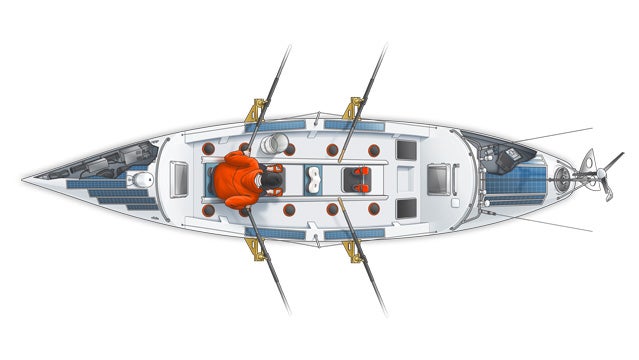SCIENCE
OAR will assist climate-change researchers by deploying two data collectors during the voyage, measuring pH, temperature, salinity, and dissolved carbon dioxide and oxygen.
WASTE MANAGEMENT
The plumbing is simple: a bucket. “You take a seat and boom—done,” says former rower and shore coordinator Greg Spooner. “But I’ll be honest: the first time, it’s a little awkward.”
HYDRATION
A $5,000 Spectra Watermakers Ventura 150 desalination system draws seawater through reverse osmosis, spitting out more than six gallons of fresh water per hour.
POWER
A 160-watt wind turbine on the stern and a 530-watt solar array on the bow create enough energy to keep the battery system charged.
LIVING QUARTERS
The boat has an eight-by-five-foot stern cabin for sleeping—usually two at a time, four in storm conditions—and a bow cabin for storing equipment. The 14-by-six-foot rowing deck is exposed to the elements.
PROPULSION
Instead of the fragile carbon-fiber oars favored by flatwater racers, the crew will use 11-foot wooden oars of their own design, wrapped with carbon fiber for rigidity.
COMMUNICATION
The crew can stream live video—a first for an oceangoing rowboat—with a satellite dome connected to Panasonic ToughBooks and ToughPads with built-in cameras.


